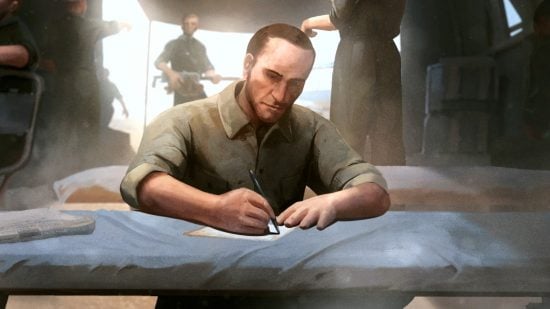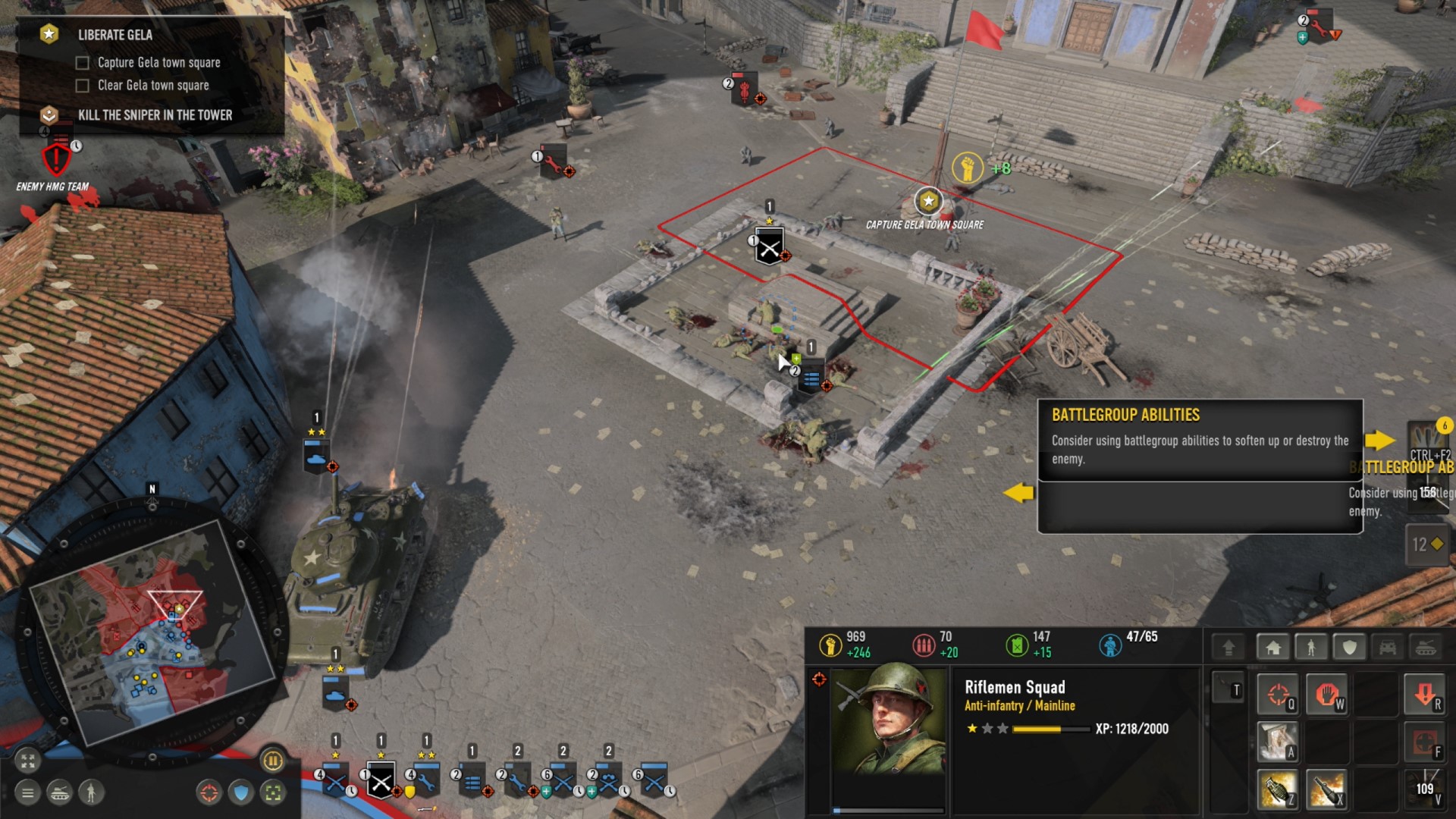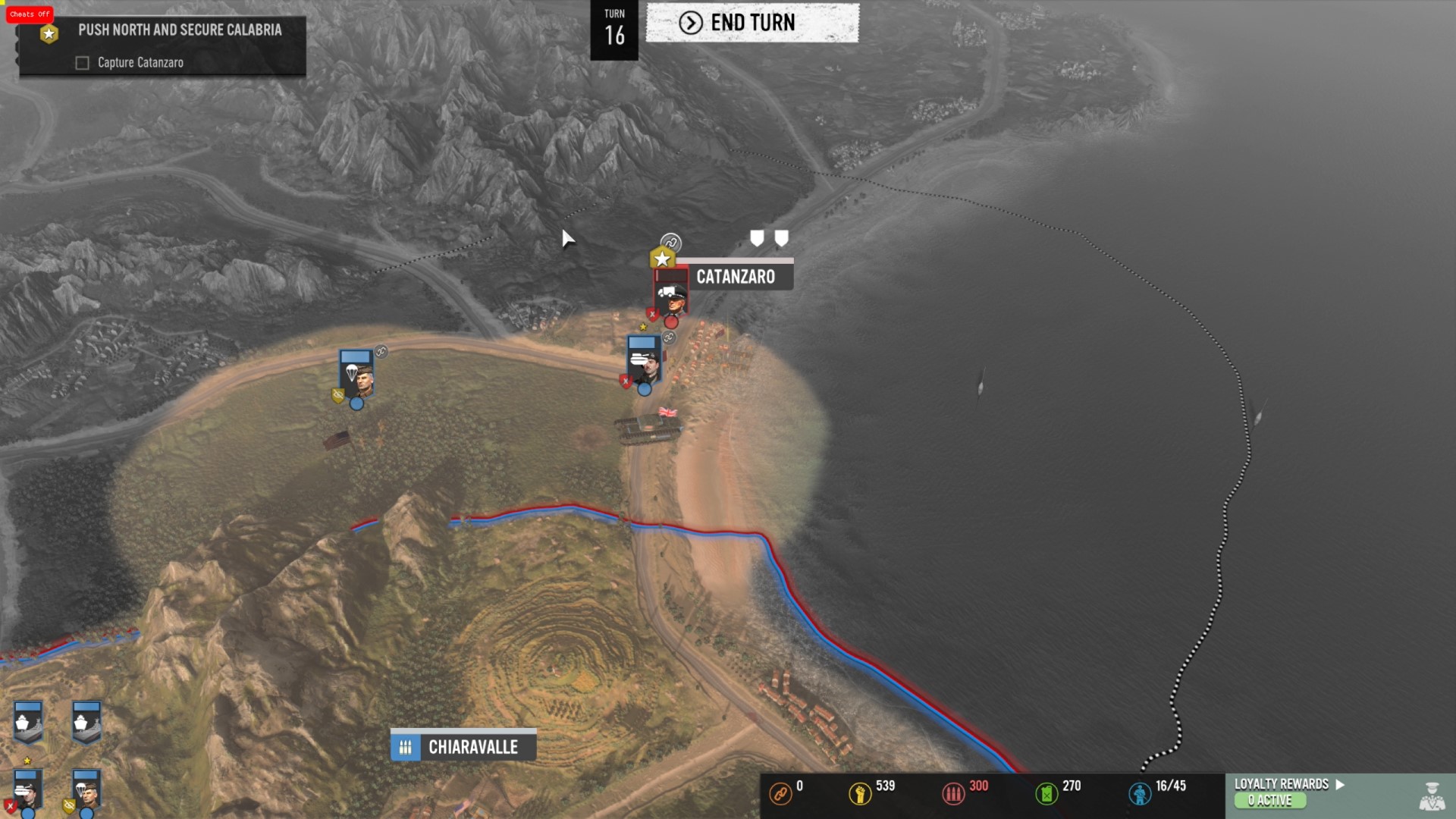In some ways, Company of Heroes 3 is a momentous new step for the series. Relic’s plunging bravely into the unknown with some considerable new features, most notably the addition of a turn-based campaign map that influences your battles in the Italian half of the singleplayer. But in another sense, that’s just window dressing. And, after spending a good six hours at the keyboard, frantically ordering men about and wincing as my tanks get ‘sploded, I’m finding that the real beating heart of the game, the RTS battles, has been transplanted straight from Company of Heroes 2.
The cover system, the way units feel and move – even many of the abilities you’ll make use of – will be instantly recognisable to loyal fans of the series; indeed you can more or less step seamlessly from the second game to Company of Heroes 3 and back again. That’s no bad thing – Company of Heroes 2 is, after all, one of the best RTS games of all time. Mainly there’ve been a few enjoyable tweaks made, as well as the addition of a massive fresh helping of content: 52 unique maps, 120 playable units, and two campaigns, each advertised as over 40 hours long.
One of the things I think will be most divisive about Company of Heroes 3 is the look of it. The graphics are pretty – and the settings of Italy and North Africa colourful – but the visuals lack a certain amount of the grit and darkness found in the game’s predecessor. The upshot of this though, is that they’re a hundred times more readable. In Company of Heroes 3, at least for me, it’s an order of magnitude easier to assess a complex skirmish (or multiple at once) simply because of how the game looks.
Clearly, Relic’s made an RTS here with some thought gone to accessibility and bringing genre newbies on board. The implementation of a tactical pause system that lets you plan things out when much is going on at once is another key example of this. In practice, I found it a little barebones, and queuing orders correctly can be a faff at times, but nonetheless, it’s an excellent way to learn the game (Though the adrenaline-fuelled panic I felt when I pressed its hotkey in multiplayer and nothing happened was next to none).
I’m a sucker for destruction effects in games, and on this count, Company of Heroes 3 made me a happy bunny. You can feel the impact of the violence taking place on screen, from the way vehicles shudder when they fire, to how bricks and dust cascade out of damaged buildings. Bullets churn up market stalls and sandbags, and terrain crumbles during a fight. Sound design is also fabulous – booms and blasts feel weighty, and you’ll often first be drawn to a new skirmish opening up off-screen, not by the game warning you, but by the distant chatter of small arms fire.
As for the turn-based top-level strategy map. I didn’t get to play past the point where the game holds your hand, but from what I saw, it’s very pretty, but fairly minimalist. I can’t imagine it would hold much interest if the RTS element wasn’t there, and I’d only want to use the autoresolve to skip over battles that threaten to be too easy or repetitive. But then – I don’t understand people who play Total War solely on the campaign map, either.
What is great about it, though, is the way the map mode makes the Italian campaign (the African one is a more traditional series of interlocking missions) feel truly customisable. You can tweak your companies in all sorts of ways, bringing in new attachments, upgrades, and support options – perhaps bombarding a tough target to weaken it, or using the abilities of Italian partisans, before a fight.
All this very much changes up the forces and tactics you’ll be able to use once you zoom in, which allows you to sort of ‘choose your own adventure’ – throughout the campaign, and for individual encounters. These options are available for the big main story missions just as they are for the generic battles, which I think should give singleplayer some real staying power – it needn’t just be something you breeze through, with the meat of the game residing in MP mode.
I had a blast (no pun intended) with Company of Heroes 3, and can’t wait to try more. Check out our interview with COH3 executive producer Steve Mele for a behind the scenes look at the decisions were made during development.


